Insurance costs can add up quickly, especially when you have multiple policies for different aspects of your life.
Many people don’t realize there’s a simple way to potentially reduce these expenses.
By exploring policy bundling options, you may find opportunities to lower your overall insurance premiums.
Bundling insurance policies can lead to significant savings, often ranging from 5% to 25% off your premiums. This approach involves combining multiple types of coverage, such as auto, home, and life insurance, with a single provider.
Not only can this strategy help reduce costs, but it can also simplify your insurance management by consolidating your policies under one company.
1) Bundle Home and Auto Insurance
Bundling home and auto insurance can lead to significant savings on your premiums.
Many insurance companies offer discounts when you combine these policies.
Bundling discounts typically range from 6% to 23%, depending on the insurer.
This can add up to substantial savings over time.
To start bundling, contact your current insurance provider to inquire about multi-policy options.
If they don’t offer competitive rates, shop around for better deals.
State Farm, Erie, and Nationwide are known for offering some of the best bundling options.
Compare their rates with other providers to find the most suitable package for your needs.
When evaluating bundle options, consider the coverage levels and deductibles for both home and auto policies.
Ensure they meet your specific requirements while still providing cost savings.
Some insurers may offer additional perks for bundling, such as a single deductible for both policies or enhanced coverage options.
Ask about these benefits when discussing bundle options with insurers.
Keep in mind that while bundling often leads to savings, it’s not always the cheapest option.
Compare bundled quotes with separate policy quotes to ensure you’re getting the best deal.
2) Bundle Auto and Renters Insurance
Bundling your renters and auto insurance policies can lead to significant savings.
Many insurance companies offer discounts when you purchase multiple policies from them.
To start bundling, obtain quotes from different insurers.
Contact your current providers and ask about their bundling options.
Also, explore other companies to compare prices and coverage.
When you bundle auto and renters insurance, you’ll typically receive a multi-policy discount.
This can result in lower premiums for both policies.
Bundling simplifies your insurance management.
You’ll have a single point of contact for claims and billing, making it easier to keep track of your policies.
Some insurers offer additional perks for bundled policies.
These may include lower deductibles or extra coverage options at no additional cost.
Remember to review your coverage needs before bundling.
Ensure that both your renters and auto policies provide adequate protection for your specific situation.
When comparing bundle offers, look beyond just the price.
Consider the coverage limits, deductibles, and customer service ratings of each insurer.
By consolidating your renters and car insurance, you can potentially save an average of 14% on your premiums.
This translates to significant annual savings while maintaining comprehensive coverage.
3) Combine Life and Health Insurance
Combining life and health insurance can potentially lower your overall premiums.
Many insurance companies offer bundled packages that include both types of coverage.
By purchasing life and health insurance together, you may qualify for a multi-policy discount.
This can result in significant savings compared to buying separate policies.
Bundled life and health insurance often comes with simplified underwriting.
This means you might avoid multiple medical exams and paperwork, making the application process smoother and faster.
Some insurers provide additional benefits when you combine these policies.
For example, you might get access to wellness programs or preventive care services at reduced costs.
Keep in mind that bundling isn’t always the best option.
Compare the combined price to the cost of separate policies from different providers.
Sometimes, specialized insurers may offer better rates for individual coverage.
When considering a life and health insurance bundle, review the coverage limits and terms carefully.
Ensure that both policies meet your specific needs and provide adequate protection.
Remember to reassess your insurance needs periodically.
As your life circumstances change, you may need to adjust your coverage or explore new bundling options to maintain optimal protection and value.
4) Pair Boat Insurance with Home Insurance
Boat owners can potentially save money by pairing their boat insurance with their home insurance policy.
Many insurers offer discounts for bundling multiple policies together.
Combining boat and home insurance can provide convenience in managing your policies.
You’ll have fewer bills to keep track of and often a single point of contact for insurance matters.
When considering bundling, compare quotes from different insurers.
The savings can vary, so it’s worth shopping around to find the best deal for your specific situation.
Keep in mind that bundling may not always be the cheapest option.
In some cases, separate policies from different insurers could be more cost-effective.
Before bundling, ensure the combined policy provides adequate coverage for both your home and boat.
Review the terms carefully to understand any limitations or exclusions.
Ask your insurance agent about additional discounts you might qualify for when bundling.
Some companies offer extra savings for safety features on your boat or home security systems.
Remember that your boat insurance needs may change over time.
Regularly review your bundled policy to ensure it still meets your requirements as your circumstances evolve.
5) Integrate RV Insurance with Auto Coverage
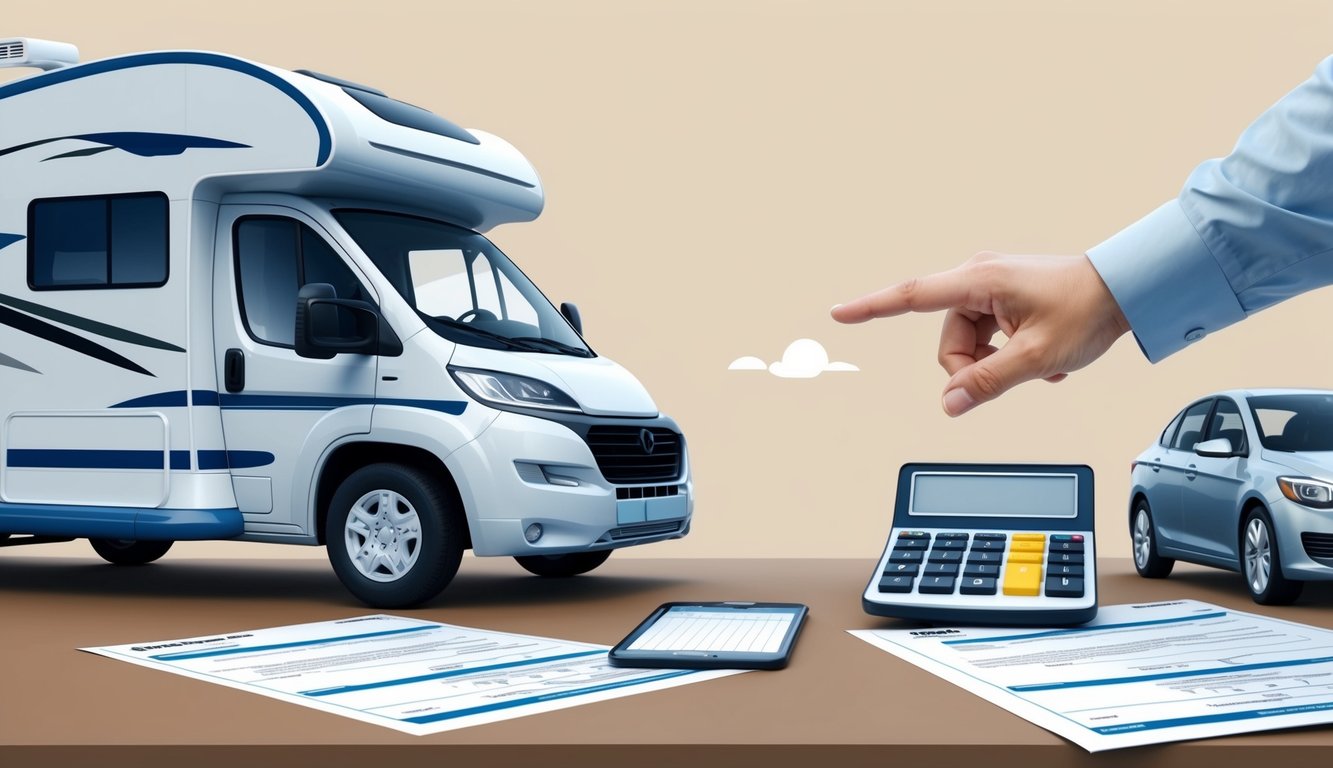
Bundling your RV insurance with your auto coverage can lead to significant savings on your premiums.
Many insurance providers offer discounts when you combine these policies.
Bundling RV insurance with other policies can help you save money.
Insurance companies often reward customers who have multiple policies with them.
When you integrate your RV coverage with your auto insurance, you simplify your insurance management.
You’ll have fewer bills to keep track of and can often manage both policies through a single account.
Some insurers may offer additional perks for bundling.
These could include enhanced coverage options or lower deductibles for your RV policy.
Before bundling, compare quotes from different providers. Progressive offers comprehensive RV insurance coverage and is known for its auto insurance, making it a potential option for integration.
Remember that bundling doesn’t always guarantee the lowest overall cost.
It’s essential to compare the total price of bundled policies against separate policies from different insurers.
Consider your specific RV usage when integrating policies.
If you use your RV frequently, you may need more extensive coverage than occasional users.
6) Add Motorcycle Insurance to Your Auto Policy

Adding motorcycle insurance to your auto policy can be an effective way to reduce your overall insurance costs.
Many insurance companies offer multi-policy discounts when you bundle different types of coverage together.
By combining your motorcycle and auto insurance, you may be eligible for savings of up to 30% on your premiums.
This bundling approach not only helps you save money but also simplifies your insurance management.
When considering this option, it’s important to compare quotes from different insurers.
Each company may offer varying discounts and coverage options, so take the time to shop around for the best deal.
Keep in mind that some insurance providers may not allow you to add a motorcycle endorsement to an existing auto policy.
This can happen if you’ve been uninsured for an extended period or if your policy has expired.
In such cases, you might need to explore standalone motorcycle insurance policies.
Even then, you may still qualify for multi-policy discounts by having both auto and motorcycle coverage with the same insurer.
When bundling your policies, make sure to review the coverage options carefully.
Ensure that both your car and motorcycle have adequate protection tailored to your specific needs and riding habits.
7) Bundle Umbrella Insurance with Home Insurance
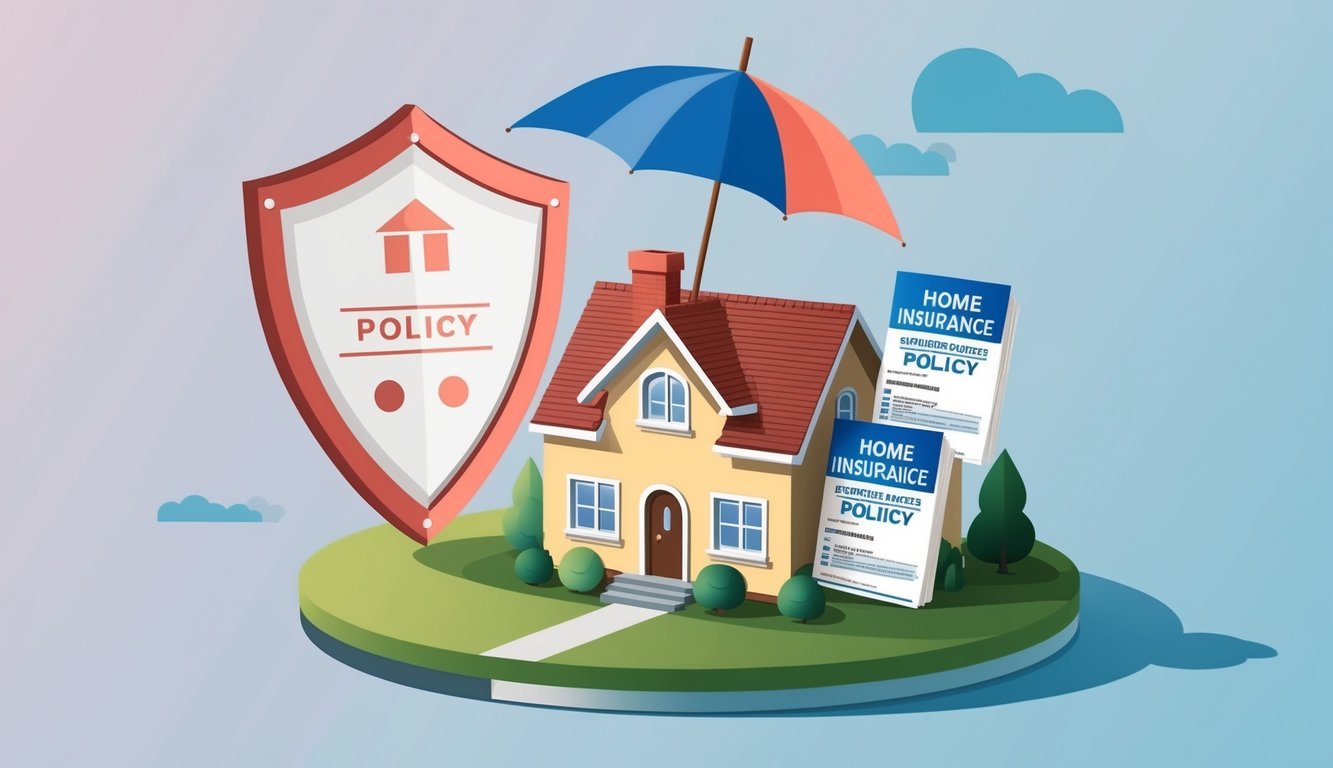
Bundling umbrella insurance with your home insurance can be a smart way to save money and enhance your coverage.
Umbrella insurance provides additional liability protection beyond your standard home insurance policy limits.
Many insurance companies offer discounts when you add umbrella coverage to your existing home insurance policy.
These discounts can range from 5% to 25% off your premiums.
To qualify for umbrella coverage, your home insurance policy may need to meet certain liability limits.
For example, you might need at least $250,000 in bodily injury liability coverage on your homeowners policy.
Adding umbrella insurance can significantly increase your overall liability protection.
This extra layer of coverage can protect your assets in case of a major lawsuit or accident on your property.
When considering bundling, compare quotes from multiple insurers.
Some companies may offer better bundling discounts or more comprehensive umbrella coverage than others.
Remember that umbrella insurance not only covers incidents related to your home but also extends to other areas of your life.
This makes it a valuable addition to your insurance portfolio.
8) Combine Pet Insurance with Rental Insurance
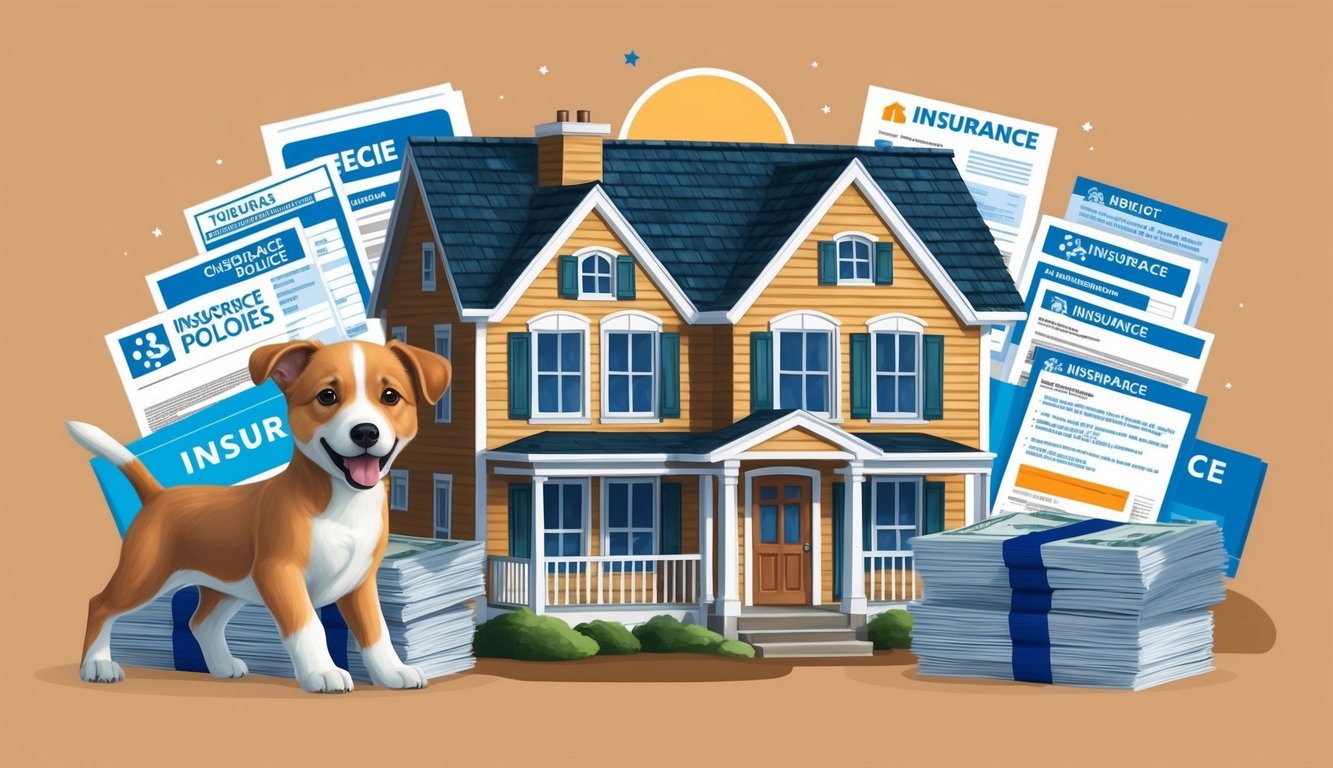
Pet owners who rent can benefit from combining pet insurance with their rental insurance policy.
This bundling option can lead to potential savings on premiums for both coverages.
Many insurance companies offer discounts when you purchase multiple policies from them.
By adding pet insurance to your existing renters policy, you may qualify for a multi-policy discount.
Pet insurance can help cover veterinary costs for accidents, illnesses, and sometimes routine care.
Renters insurance typically protects your personal property and provides liability coverage.
When you bundle these policies, you create a comprehensive protection plan for both your belongings and your furry friend.
This can give you peace of mind knowing that you’re prepared for various scenarios.
Before bundling, compare quotes from different insurers.
Some companies may offer better discounts or more suitable coverage options for your specific needs.
Remember to review the terms and conditions of both policies carefully.
Ensure that the combined coverage meets your requirements for both rental and pet protection.
By bundling pet and renters insurance, you can simplify your insurance management.
You’ll have fewer policies to keep track of and may be able to streamline your premium payments.
Keep in mind that not all insurance providers offer pet insurance.
If your current renters insurance company doesn’t provide this option, consider shopping around for a provider that offers both coverages.
9) Pair Travel Insurance with Health Insurance
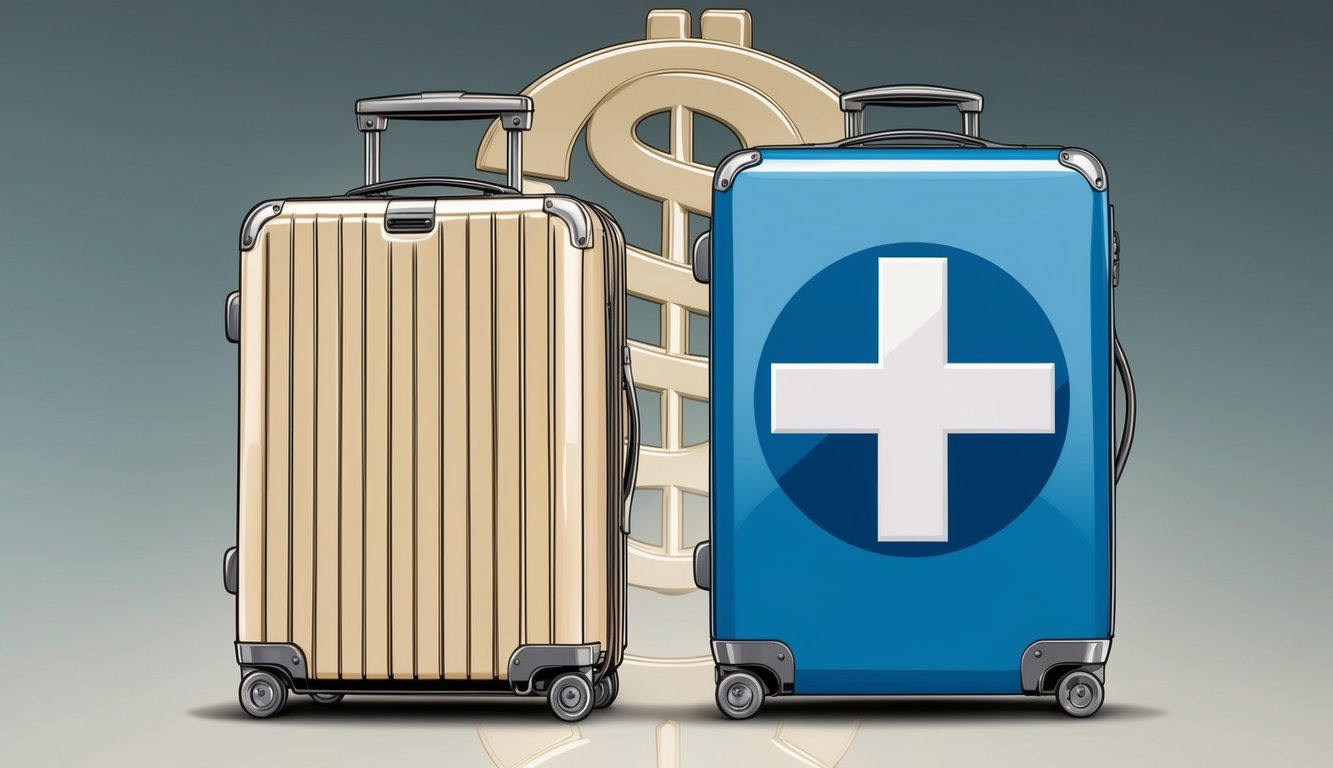
When planning your next trip, consider pairing travel insurance with your existing health insurance policy.
This combination can provide comprehensive coverage and potentially reduce your overall insurance costs.
Travel insurance offers protection for trip cancellations, lost luggage, and other travel-related issues.
It also typically includes emergency medical coverage for injuries or illnesses that occur while you’re away from home.
By pairing travel insurance with your regular health insurance, you can fill any gaps in coverage.
Some health insurance plans have limited coverage outside your home country or network.
Travel insurance can supplement this, ensuring you’re fully protected.
Many insurance companies offer discounts when you bundle travel insurance with other policies.
You might save 5% to 25% on your premiums by combining these coverages.
Before purchasing travel insurance, check your existing health insurance policy.
Some plans may already include limited travel coverage.
Understanding what’s already covered can help you avoid paying for duplicate protection.
When comparing travel insurance options, look for plans that complement your health insurance.
Choose coverage that fills any gaps and provides additional benefits like emergency evacuation or repatriation.
Remember to disclose any pre-existing conditions when applying for travel insurance.
This ensures you have the appropriate coverage for your specific health needs while traveling.
10) Consolidate Business and Auto Insurance
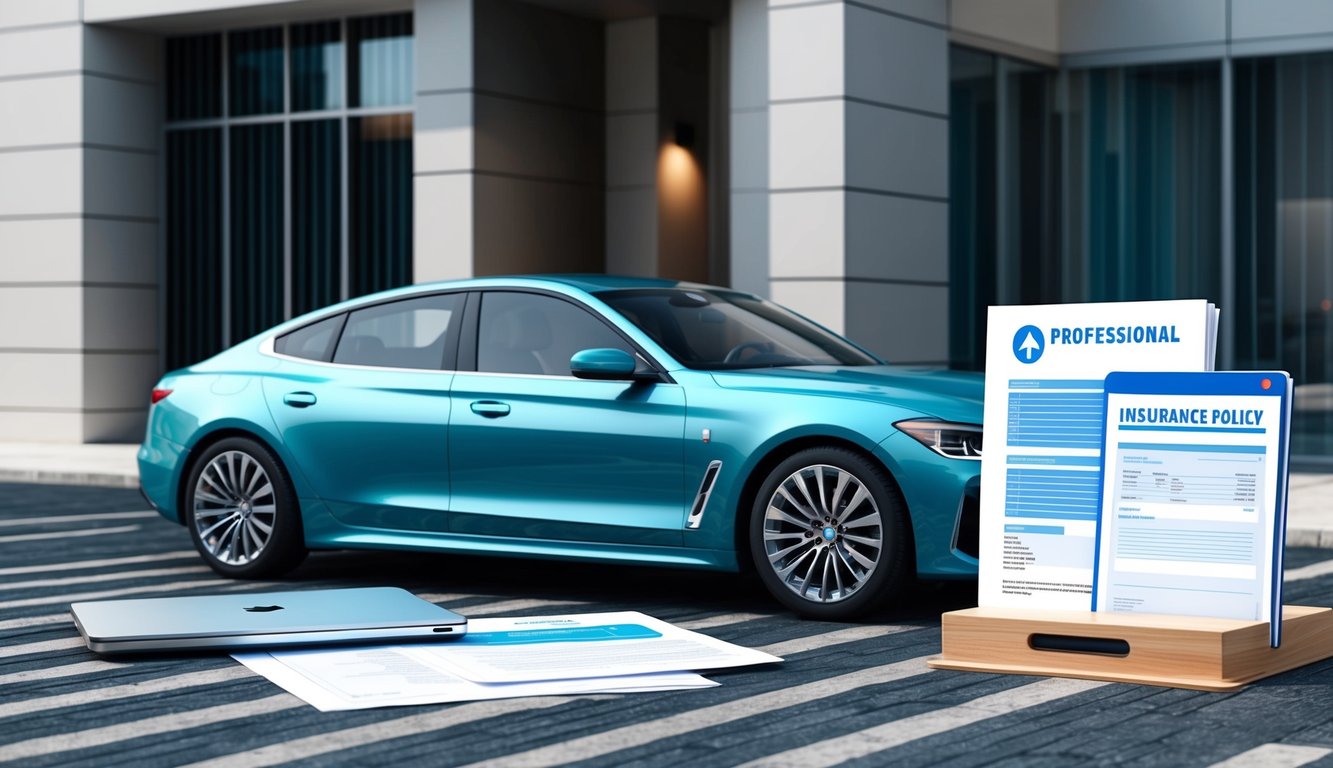
Combining your business and auto insurance policies can lead to significant savings.
Many insurers offer discounts when you bundle these coverages together.
Look for providers that specialize in both commercial and personal auto insurance.
They often have package deals designed for business owners who use their vehicles for work.
When consolidating, consider how your business uses vehicles.
If you use personal cars for work occasionally, you might need to add commercial use coverage to your personal policy.
For businesses with a fleet, a commercial auto policy that covers all vehicles can be more cost-effective.
This approach simplifies management and can reduce overall premiums.
Bundling business insurance policies not only saves money but also streamlines your coverage management.
You’ll have one point of contact for both personal and business auto insurance needs.
Ask your insurance agent about multi-policy discounts.
Some insurers offer better rates when you combine business liability, property, and auto insurance into a comprehensive package.
Remember to review your consolidated policy annually.
As your business grows or changes, your insurance needs may evolve.
Regular reviews ensure you maintain appropriate coverage at the best possible rate.
By consolidating your business and auto insurance, you can potentially reduce administrative work and save time.
This approach allows you to focus more on running your business and less on managing multiple insurance policies.
Understanding Insurance Bundling
Insurance bundling offers a way to simplify your coverage and potentially reduce premiums.
This approach combines multiple policies from the same provider, often resulting in cost savings and convenience.
Definition of Insurance Bundling
Insurance bundling refers to the practice of purchasing multiple insurance policies from a single provider.
This strategy allows you to consolidate your coverage under one insurer, streamlining your insurance management.
By bundling, you can often secure discounts ranging from 5% to 25% on your total premium costs.
The concept is straightforward: instead of having separate policies with different companies, you combine them with one insurer.
This approach not only simplifies your paperwork but can lead to significant savings.
Common Types of Bundled Policies
Several types of insurance policies can be bundled together.
The most common combination is auto and home insurance.
This pairing typically offers the most substantial discounts, with average savings of up to 16% on premiums.
Other popular bundling options include:
- Auto and renters insurance
- Home and life insurance
- Auto and motorcycle insurance
- Home and umbrella insurance
You can often mix and match these policies based on your specific needs.
Some insurers even allow bundling of business and personal insurance for entrepreneurs or small business owners.
Remember, while bundling can offer savings, it’s essential to compare the bundled rates with individual policy prices from different providers to ensure you’re getting the best deal.
Benefits of Bundling Insurance Policies
Bundling insurance policies offers two key advantages: significant cost savings and simplified policy management.
These benefits can make a substantial difference in your insurance experience and budget.
Cost Savings
Bundling insurance policies can lead to notable discounts on your premiums.
Many insurers offer multi-policy discounts to customers who purchase multiple types of coverage from them.
These savings can be substantial:
- Progressive: Average 5% savings on all bundles
- Nationwide: Up to 20% savings on home and auto bundles
- Allstate: Up to 25% savings on home and auto bundles
- Travelers: Up to 10% off car insurance when bundled
The potential savings from bundling can amount to hundreds of dollars per year.
This reduction in premiums allows you to maintain comprehensive coverage while keeping more money in your pocket.
Simplifying Policy Management
Bundling insurance policies streamlines your insurance management process.
You can consolidate multiple policies with a single provider to simplify your administrative tasks and reduce paperwork.
You’ll have one point of contact for all your insurance needs.
This will make it easier to manage claims, update information, or make changes to your policies.
This centralized approach can save you time and reduce the stress of dealing with multiple insurance companies.
Additionally, having all your policies in one place allows for easier tracking of coverage and renewal dates.
You can often access and manage all your policy documents through a single online portal or app, further simplifying your insurance management.






